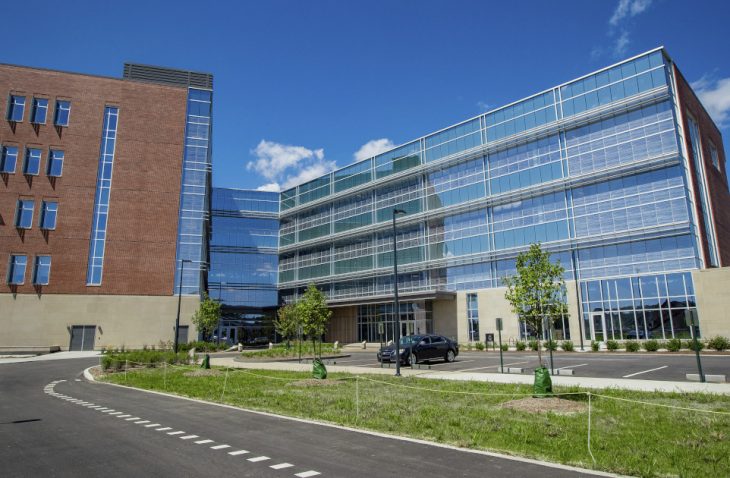New Health Professions Building

IMEG provided engineering design services for Ball State University’s new health building that consolidates the university’s health-related programs into Interprofessional Education (IPE) spaces including academic office suites, faculty offices, classrooms, teaching labs, research labs, health clinics, simulation and patient suites, and general support spaces. Programs include nursing, health sciences, speech pathology and audiology, nutrition and dietetics, social work, counseling psychology and guidance services, and kinesiology.
The new building doubled the square footage and provides a unique, state-of-the-art learning environment that fosters collaboration and problem-solving across disciplines. A wellness garden, IPE spaces, and a fully equipped demonstration kitchen inspire students to practice wellness both in the classroom and their personal lives.
New simulation suites are set up like hospital rooms and designed to hold several patient beds. A fully functioning public clinic is equipped with audio loops to help the hearing impaired. The hearing loop provides a magnetic, wireless signal that is picked up by hearing aids to help hearing impaired visitors better interact with the staff.
The second floor of the building includes observation rooms containing speakers, microphones, and cameras to help speech pathology and audiology students learn and help parents review sessions, all while maintaining HIPPA health regulation compliance.
The building connects to the campus central plant chilled water and geothermal loops, with both systems’ pumps fed by variable frequency drives to match pump speed with system demand. One backup boiler will supply heating water when very cold conditions prevent the geothermal system from meeting building heating needs. Two variable air volume air handing units with fan array style supply and return fans will serve all levels of the building.
A 2,000 kW diesel emergency generator serves the building, and a power monitoring system tracks various building loads separately per the LEED Measurement and Verification credit. Additional energy-saving measures include vacancy and occupancy sensors, daylighting controls, LED interior and exterior lighting, zoned temperature control, and low-flow plumbing fixtures. Solar panels are also included into the design of the building helping Ball State University define itself as a “Top Green University”.







